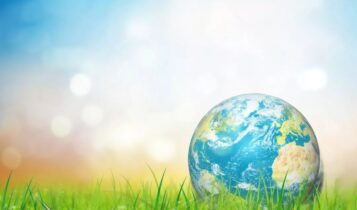Climate change affect biodiversity The impacts of climate change on biodiversity are comprehensive, including genetic diversity, species diversity and ecosystem diversity.
Climate change affect biodiversity will have a profound impact on plant species richness, distribution pattern, interspecies relations, phenology, photosynthesis, etc., and increase the risk of alien species invasion and extinction of native species. For example, in the last decade of the 20th century, as the temperature rises, the variety of hot plants in the vascular plants in the Netherlands increased.
Climate warming will lead to the extension of the growth season of some plants, the early flowering, the acceleration of growth, and the disruption of the original intermediate relationship. The areas where climate change has the greatest impact on plant diversity are those where the habitats of species are relatively fixed and species cannot be moved, so species with smaller populations and broken habitats, or species with island-shaped distributions are relatively more vulnerable to Climate change affect biodiversity.
Temperature has a decisive effect on the hatching results of some reptile and amphibians. The incubation temperature can determine the sex of the offspring. For example, for some turtles, when the hatching temperature is greater than 29°C, most of the hatched cubs are females, and when the hatching temperature is less than 27°C, most of the hatched cubs are male.
For Yangtze crocodiles, when the incubation temperature is 28.5°C, the hatched crocodiles are all females, and when the incubation temperature is 33.5-35°C, the hatched crocodiles are male. That is to say, against the backdrop of rising temperatures, some turtles and crocodiles may face the threat of extinction. Some species that are symbiotic, parasitic and food chains may disrupt long-term evolutionary interspecific relationships due to their different sensitivity to temperature.
Climate change affect biodiversity can also cause species to move towards low temperatures. There have been reports in many parts of the northern hemisphere. Butterflies, some birds and mammals are moving northward, and the richness of European migratory and resident birds has changed due to rising temperatures.

Drought stress from climate change can change the relationship between pests and hosts and cause pests to migrate to high latitudes and altitudes, thus increasing the infection rate of vegetation pests. Climate change can also cause pests to overflow, and the intensity and frequency of pest and disease outbreaks increase. For example, the disease caused by climate change has intensified, which once led to the extinction of amphibian species in North America. Many birds in northern Europe and the United States have spawning, hatching and migration since the mid-20th century.
Climate change affect biodiversity can also lead to changes in ecosystem structure, function and diversity. For example, changes in the spatial and temporal pattern of precipitation have tripled the density of woody bushes in the Chihuahua Desert in the United States in the 1970s, and the number of common animals in the past has decreased and the number of rare animals has increased. In addition, rising temperature increases plant productivity in high-latitude terrestrial ecosystems and changes the carbon and nitrogen cycle process of ecosystems.
The natural conditions interlaced zone is one of the most sensitive to climate change, such as the widening of the semi-tundra transition zone of the Changbai Mountains in China, and the migration of some plants in the Wutai Mountain Alpine Meadow and Forest Line Transition Zone to high altitudes. The northern forests expand north at a speed of 100-150 kilometers per temperature of 1°C, and global warming causes the ecosystem to move to the poles and high altitudes as a whole. The abundance of herbs and lichens in tundra changes, thus changing the structure, composition, function and service of the ecosystem.
It is predicted that future climate change will lead to changes in the structure and function of marine ecosystems. For example, the sea temperature rises, the ice sheet decreases, the salinity and oxygen change, the distribution and phenology of marine organisms change, algae, plankton and fish in the ocean at high latitudes migrate to the poles, and the biological richness, community structure, service capacity, etc. of the marine ecosystem will change.
According to the IPCC report, if the global temperature rises by 1°C, the global coral reefs will be generally bleached, and sea level rise will lead to the flooding of coastal wetlands. It is estimated that by 2080, 20% of wetlands will be lost and mangrove ecosystems will be greatly affected. Climate change will also have a greater impact on marine plankton, especially polar ecosystems. Many marine and freshwater biophenology and distributions have also changed with increased water temperatures, changes in ice sheets, changes in oxygen content and circulation, and algae, plankton and fish migrate to extremes in terms of scope and richness.
Climate change affect biodiversity conservation function of nature reserves and make the biodiversity conservation of future protected areas face great pressure and challenges. Climate change causes some species to migrate continuously in search of new suitable habitats, and some species even migrate to habitats outside the reserve, causing these species to disappear within the reserve, which will not be conducive to the effective protection of these species in the reserve.
Climate change affect biodiversity may also make the boundaries of the protected area no longer suitable. The original The management is no longer effective.Climate change can also cause the frequency of extreme weather events to increase, such as blizzards, floods, droughts, etc., causing damage to plants and animals and ecosystems. The increase in the frequency of fires can also cause devastating damage to ecosystems.

